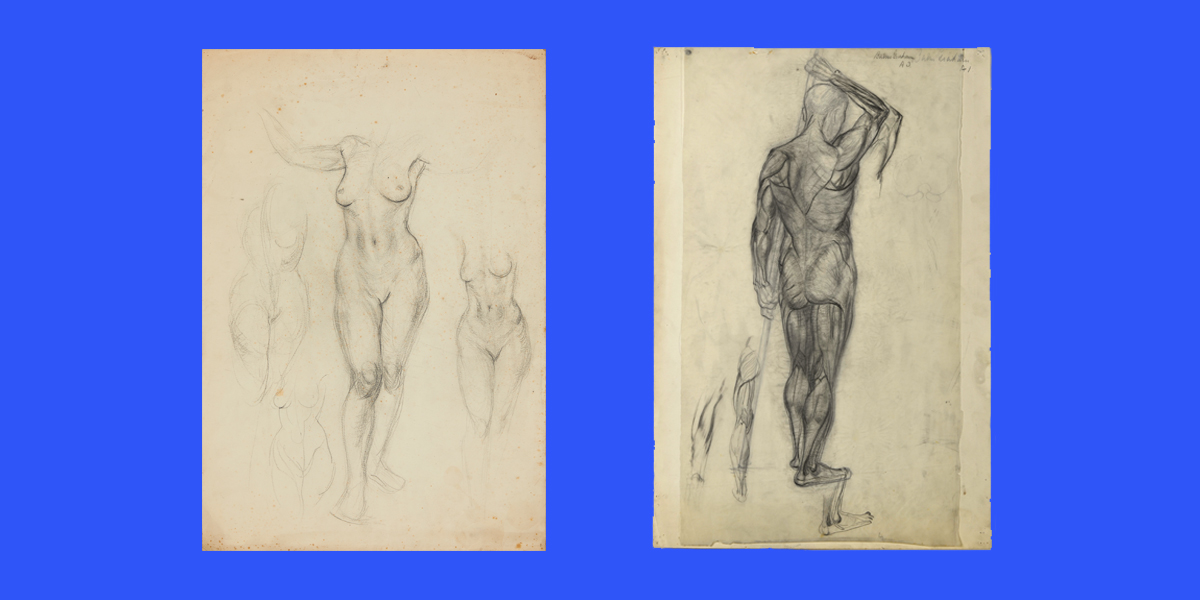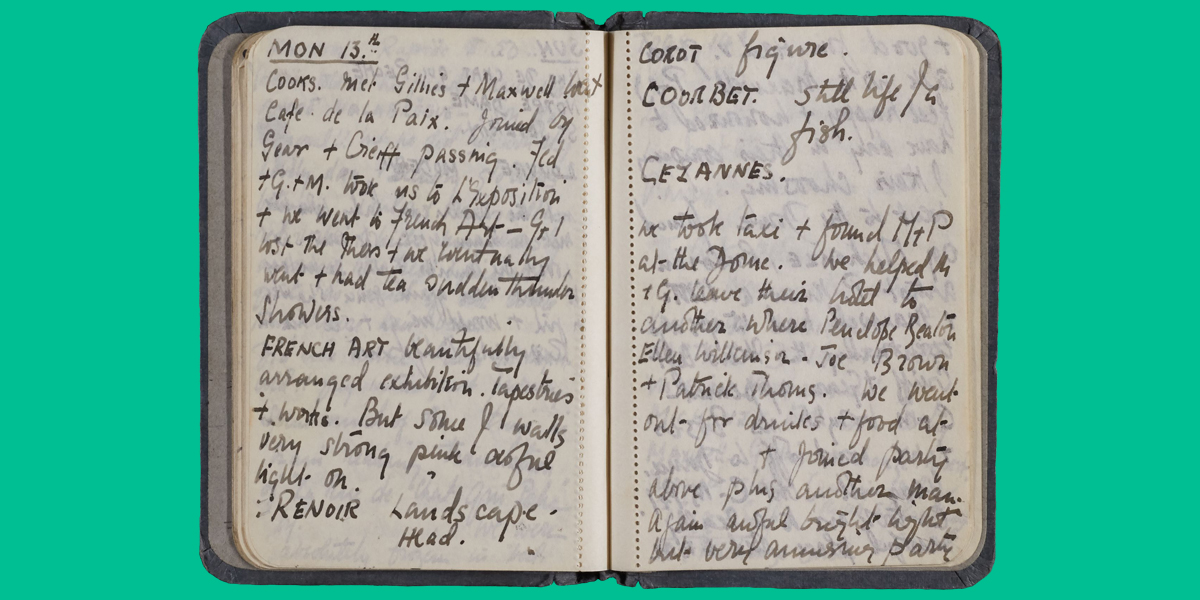Life Drawing and Drawing on Life: Barns-Graham on William Gillies
Sir William Gillies, renowned tutor, and later Principal, of Edinburgh College of Art tutored Barns-Graham in life drawing during her period of study at the College from 1931-7. To coincide with the anniversary exhibition, William Gillies: Modernism and Nation, opening at the Royal Scottish Academy this month, we are taking a look at some of Barns-Graham’s recollections of the artist.
Demonstration over criticism
In the early 1990s, Barns-Graham drafted a book of Reminiscences, an attempt to record her interactions with and experiences of other artists and their work. In it she recalls Gillies’ approach to teaching, preferring demonstration over criticism:
Gillies preferred to demonstrate with illustration than talk, he would nervously come to your easel, quietly saying – “Good, good, but do you think the head is a wee bit small” or “Good, good, but do you think the legs are a wee bit long?” and we students who cunningly and deliberately made our drawings to one side leaving half the sheet and looking worried, he’d take his pencil and rapidly do a beautiful line drawing in the space – I must have several of these!!

Two life drawings from Barns-Graham's studies at Edinburgh College of Art, 1930s, BGT1771 and BGT2744
In a list of artworks by other artists owned by Barns-Graham from the same draft-text, she refers to works by Gillies as ‘pencil drawings of nudes on my college life dwg. [sic] sheets.’ The Trust hold several student life drawings by Barns-Graham and these do appear to mirror her accounts, with partial drawings of a limb or other anatomical feature alongside the main pose.

Pages from Barns-Graham's travel diary, 1937
An Eventful Evening in Paris
Her second memory of Gillies is of an encounter with him and his ECA colleague, Johnny Maxwell, in Paris. In 1937, Barns-Graham and Margaret Mellis received an Andrew Grant Vocation Scholarship to travel to Paris, St Tropez and Ramatuelle. On their return journey through Paris, the pair met Gillies and Maxwell at the famous Café de la Paix and spent the day together visiting exhibitions – although Barns-Graham and Gillies appear to have lost the others before regrouping at another famous artist hangout, Le Dôme Café. The evening turned into a more eventful affair recording in her diary at the time, ‘G took us to a really awful place. Bed 6am’. In her Reminiscences, she shares a fuller description of the night:
[We visited] what turned out to be a dubious night club, which took me years to understand and maybe took Gillies a little while, I was puzzled, beautiful girls parading on the stage in long gowns off the stage briefly and on again in the nude, moving around and around like one of Cezannes [sic] paintings, Margaret and I were suddenly whisked away!
Barns-Graham recorded relatively few memories or thoughts on other artists, compared to the number she encountered or knew more closely over her eight-decade career. That she chose to single out these stories about Gillies from the 1930s demonstrates her fondness for the artist and recognises his impact on her career.
